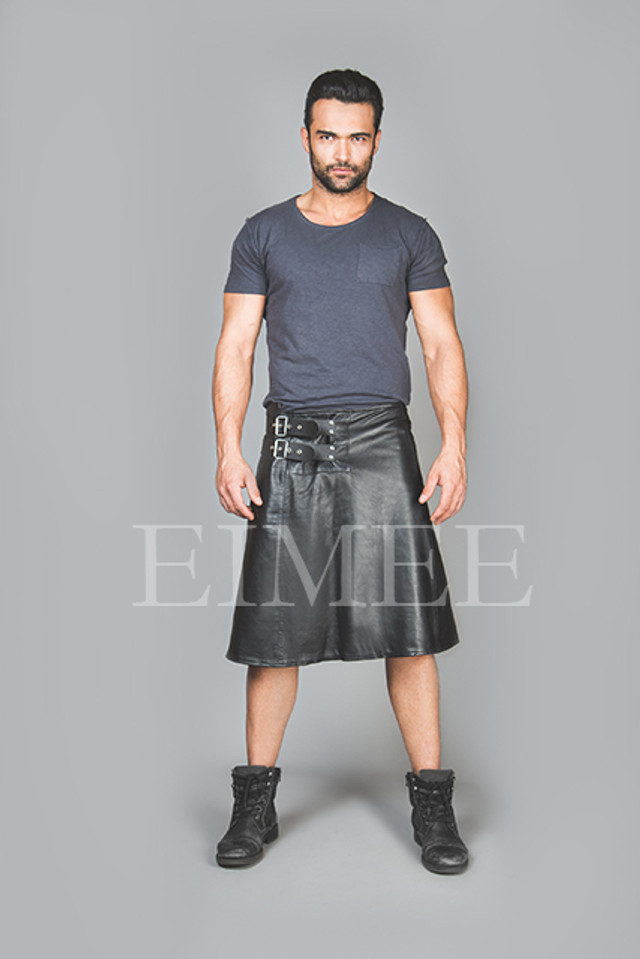
Leather kilts have evolved from traditional Scottish attire into a modern fashion statement, bridging the gap between historical heritage and contemporary style. Whether you’re a kilt aficionado or a curious newcomer, understanding the intricacies of leather kilts can enhance your appreciation for this unique garment.
History and Evolution of the Kilt
Kilts originated in Scotland during the 16th century, initially made from wool and serving as practical attire for Highlanders. The traditional tartan patterns represented different clans. Over time, kilts have transformed, and the leather kilt has emerged as a bold, modern variation, offering durability and a rugged aesthetic.
Materials and Craftsmanship
A leather kilt is crafted from high-quality leather, ensuring longevity and a distinctive look. The craftsmanship involves meticulous attention to detail, from the selection of the hide to the stitching process. Artisans often use full-grain leather, which is the most durable and develops a beautiful patina over time.
Styles and Variations
Leather kilts come in various styles, catering to different tastes. Some popular styles include the utility kilt, which features multiple pockets and a practical design, and the traditional style, which maintains the pleats and structure of a classic kilt. Additionally, fashion-forward designs incorporate elements like the underbust corset belt, adding a touch of Victorian flair.
Comfort and Fit
Comfort is paramount when wearing a leather kilt. The flexibility of leather allows for ease of movement, while the natural breathability of the material ensures comfort in various climates. Kilts can be custom-fitted to ensure they sit comfortably on the waist and fall correctly on the legs.
Occasions to Wear a Leather Kilt
Leather kilts are versatile enough for a range of occasions. They can be worn casually with a simple t-shirt or dressed up with a formal jacket for events like weddings or parties. They’re also popular in alternative subcultures, including punk and goth scenes, where they can be paired with accessories like an underbust corset belt for a striking look.
Pairing with Accessories
Accessorizing a leather kilt can enhance its aesthetic appeal. Sporrans, traditional pouches worn at the front, are both practical and stylish. Belts, particularly those designed as an underbust corset belt, can cinch the waist and add a dramatic effect. Footwear choices range from boots to dress shoes, depending on the occasion.
Care and Maintenance
Proper care is essential to maintain the appearance and longevity of a leather kilt. Regular cleaning with a damp cloth and occasional conditioning with leather-specific products will keep the leather supple and prevent it from drying out. Storing the kilt in a cool, dry place, away from direct sunlight, is also crucial.
Purchasing Tips
When buying a leather kilt, consider the type of leather, craftsmanship, and fit. Opt for kilts made from full-grain leather for the best quality. Ensure that the kilt is well-constructed, with reinforced stitching and quality hardware. Custom measurements are preferable for the best fit, but many retailers offer adjustable options.
Cultural Significance
Despite its modern twist, the leather kilt still carries cultural significance. It pays homage to Scottish heritage while allowing for personal expression. Wearing a leather kilt can be a nod to history, a fashion statement, or both, depending on the context and styling choices.
Future of Leather Kilts
The future of leather kilts looks promising as fashion continues to embrace individuality and historical influences. Designers are experimenting with new styles and materials, making leather kilts a staple in both alternative and mainstream fashion circles.
Frequently Asked Questions
1. What makes a leather kilt different from a traditional kilt?
A leather kilt differs mainly in material. Traditional kilts are made from wool and often feature tartan patterns, while leather kilts are made from durable leather, offering a modern and rugged look.
2. How should I clean my leather kilt?
Clean your leather kilt with a damp cloth for regular maintenance. For deeper cleaning, use leather-specific cleaners and conditioners. Avoid soaking the leather or using harsh chemicals.
3. Can I wear a leather kilt in warm weather?
Yes, leather kilts can be worn in warm weather. Leather is breathable, but ensure you’re comfortable by choosing lighter weights and ensuring proper ventilation.
4. How do I style a leather kilt for formal occasions?
For formal occasions, pair your leather kilt with a dress shirt, a jacket, and polished shoes. Accessories like a sporran and an underbust corset belt can add a sophisticated touch.
5. Where can I purchase a quality leather kilt?
Quality leather kilts can be purchased from specialty retailers, both online and in-store. Look for retailers with good reviews and a reputation for high-quality craftsmanship.
Conclusion
The leather kilt is a versatile and stylish garment that transcends its traditional roots to offer a unique blend of history and modernity. Whether worn casually or for special occasions, it provides a distinctive look that can be personalized with various accessories, including the underbust corset belt. With proper care, a leather kilt can be a long-lasting addition to your wardrobe, reflecting both cultural heritage and contemporary fashion sensibilities.
